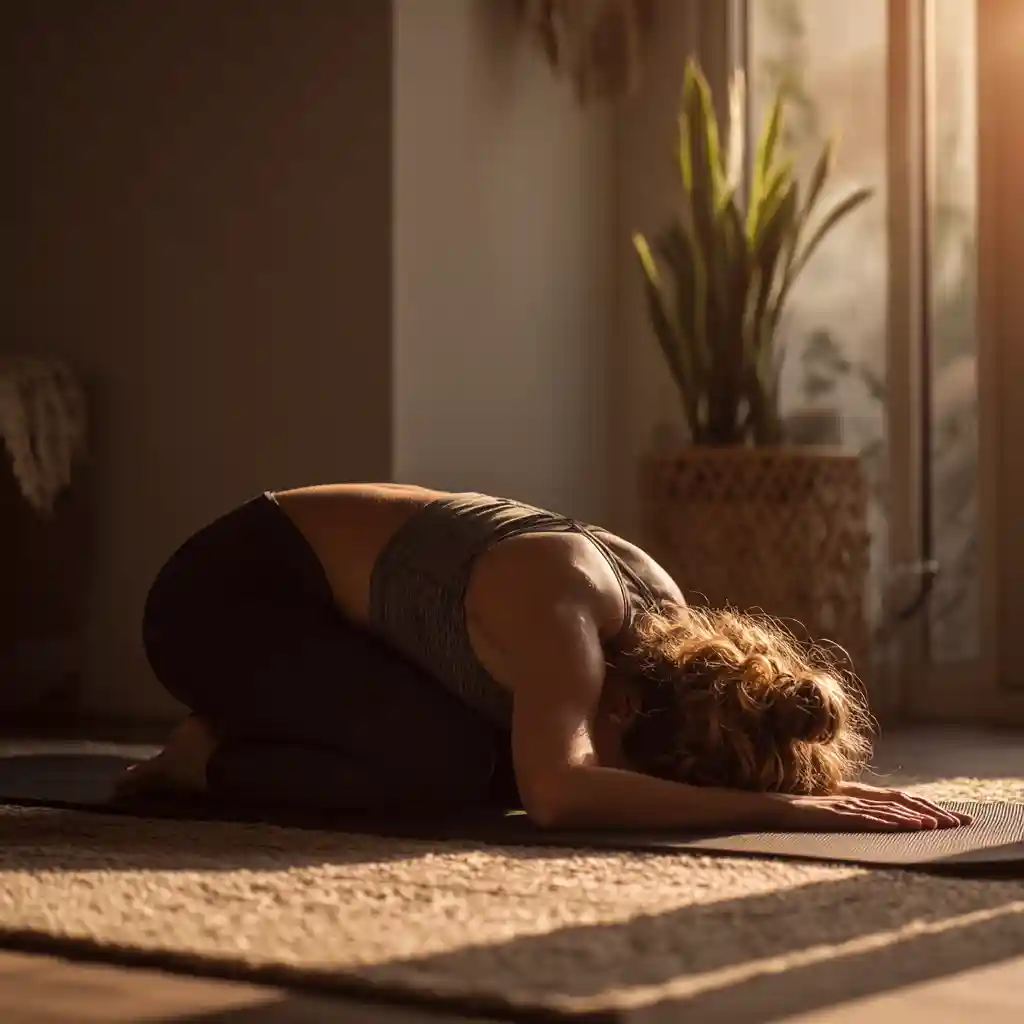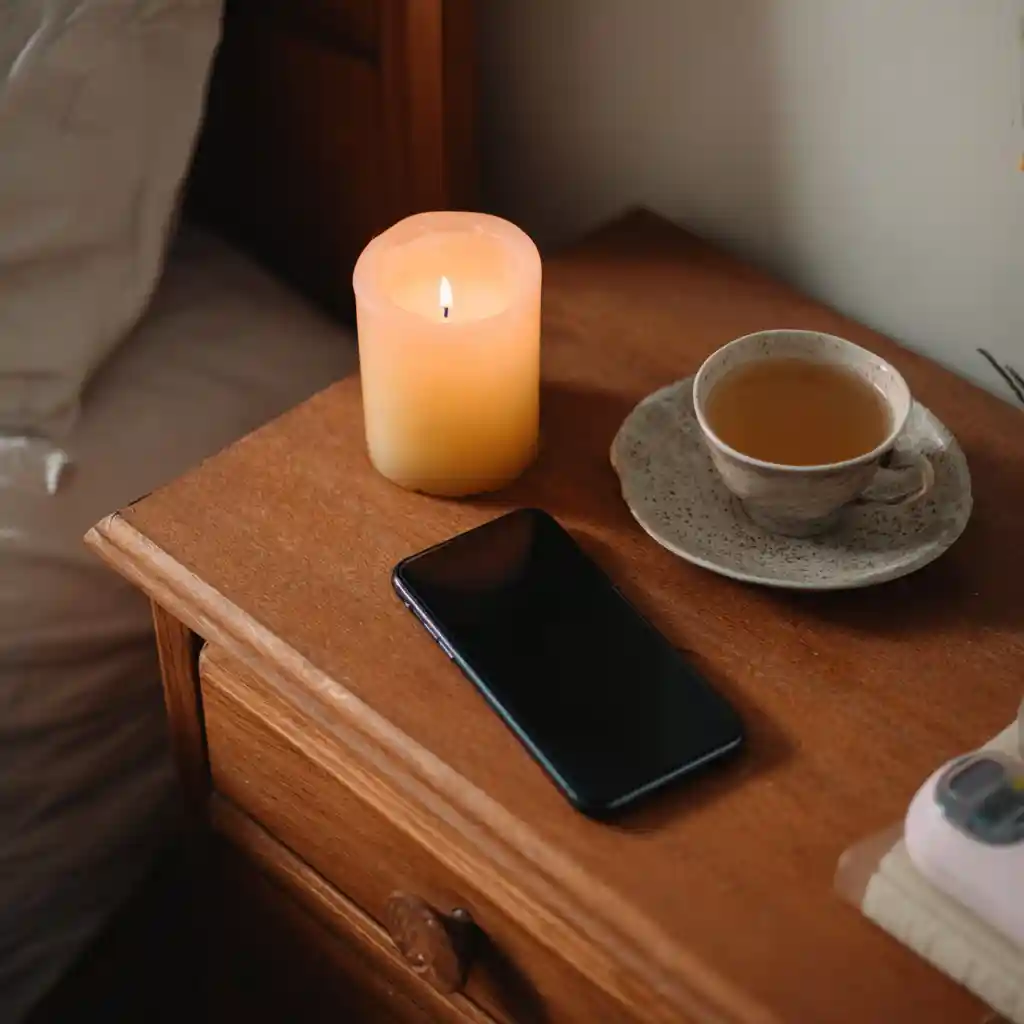Feeling tired all the time even after a full night’s sleep? You’re not alone. Many of us push through busy days and still wake up exhausted. The truth is, rest is more than just sleep. In fact, experts have identified seven distinct types of rest our bodies and minds need to truly feel refreshed. Embracing all these types of rest can help you restore your energy on every level – physical, mental, and even spiritual – leading to a more balanced, healthy life.
In this friendly guide, we’ll explore the 7 types of rest for complete wellness and share practical, easy ways you can incorporate each one into your routine. From gentle yoga poses and mindful eating practices to nourishing recipes and quiet moments of reflection, these tips will help you recharge fully. Let’s dive in and discover how to truly rest and rejuvenate your body, mind, and soul.
Jump To
1. Physical Rest

Physical rest is the most obvious type of rest, it’s all about giving your body a break. This includes both passive rest (like a good night’s sleep or a nap) and active rest that helps your body relax. If you’ve ever felt “bone tired”, that’s your body begging for physical rest. Signs you need it include muscle soreness, low energy, or feeling like you can’t get off the couch.
How to Get Physical Rest: Make sleep a priority by aiming for 7–9 hours per night. Create a relaxing evening routine, dim the lights and avoid screens before bed. You can also try active physical rest: gentle movement that restores the body without strain. For example, do some light stretching or a restorative yoga pose. Child’s Pose (Balasana) is a gentle yoga posture that exemplifies physical rest. It allows your muscles to soften and your nervous system to calm down, making it easier to release tension. Consider taking a warm bath to soothe tired muscles or treat yourself to a massage if possible. Even short breaks during the day – standing up to stretch or taking a brief walk – can help your body recharge. And don’t forget nourishment: eating wholesome foods and staying hydrated supports your body’s recovery, so maybe end your day with a calming chamomile tea or a turmeric latte to relax your body from the inside out.
Check out our Healthy Recipes section, we’re adding more calming nighttime teas and restorative meals soon.
2. Mental Rest

Ever tried to sleep but your mind keeps racing with thoughts? That’s a sign you need mental rest. Mental rest means giving your brain a break from the constant stimulation, information, and to-do lists. In our busy lives, we’re often bombarded with emails, news, and notifications all day. If you feel brain-fogged, easily distracted, or find it hard to concentrate, you’re likely mentally exhausted.
How to Get Mental Rest: Take short mental breaks throughout your day. This could be as simple as closing your eyes and taking a few deep breaths at your desk. Practicing mindfulness or meditation for just a few minutes can work wonders to quiet internal chatter. You might step outside for a quick walk in nature without your phone, giving your mind a chance to wander and reset. Another helpful trick is a brain dump before bed – jot down any nagging thoughts or tomorrow’s tasks in a journal so your mind can let them go for the night. (If you enjoy journaling, consider doing it with a cup of herbal tea for double relaxation!) Also, try focusing on one task at a time rather than multitasking, which can mentally tire you out. Embracing mental rest will leave you feeling clearer and calmer.
3. Sensory Rest

Think about how you feel after hours of loud noise, bright screens, or navigating a busy city – overwhelmed, right? That’s where sensory rest comes in. In our modern world, our senses (sight, sound, touch, etc.) are constantly stimulated by electronics, traffic, background chatter, and more. If you notice yourself feeling irritable, anxious, or mentally drained for no obvious reason, you might be experiencing sensory overload.
How to Get Sensory Rest: The key is to reduce excessive stimuli and find moments of calm for your senses. Start by taking small steps: turn off unnecessary notifications and enjoy some screen-free time each day (for example, no phone for the first hour in the morning or during meals). Dim the lights in the evening or light a candle instead of harsh bulbs to soothe your eyes. You can also create a quiet corner in your home – a cozy spot to sit in silence or with gentle music. Even a few minutes of meditation in nature or by the water can provide deep sensory rest, as natural sounds and sights help calm an overstimulated mind. Try closing your eyes and breathing slowly, focusing on one sense at a time (like listening to the birds or feeling a breeze). If you practice mindful eating, that can double as sensory rest: savor the textures, smells, and flavors of your food in a quiet environment, which helps you tune out other distractions. By intentionally unplugging and giving your senses a break, you’ll feel more at peace and less frazzled.
4. Creative Rest
Creative rest might sound surprising, but it’s essential, especially if you spend a lot of time solving problems or coming up with ideas. It’s about recharging your imagination and inspiration. When you’re experiencing a creative block, feeling uninspired, or mentally drained from constant problem-solving, you probably need a dose of creative rest. This type of rest allows you to appreciate beauty and art without any pressure to produce anything. Even if you don’t consider yourself an artist, your brain uses creativity in everyday life (from planning meals to decorating your space), so it needs rest too!
How to Get Creative Rest: Feed your soul with inspiring experiences rather than forcing yourself to be productive. For example, spend time in nature – watch a sunset, walk in a green park, or gaze at the stars. Nature is wonderfully restorative and can spark awe and creativity without demanding anything from you. You could also enjoy someone else’s art: listen to music you love, read a novel for fun, visit a museum or even browse beautiful photos online. The idea is to soak in inspiration with no expectations. If you normally cook fancy meals or craft content for work, give yourself permission to create just for enjoyment – maybe try a new simple recipe for fun (check out our healthy recipes section for inspiration) or doodle with no end goal. By immersing yourself in relaxing creative outlets, you refill your creative well. You’ll notice that after some creative rest, you return to your tasks with fresh ideas and renewed enthusiasm.
5. Emotional Rest

Emotional rest means letting yourself be real and authentic, without having to put on a “brave face” or people-please. We all carry emotional burdens – perhaps you’re always the helper, or you suppress your own feelings to avoid upsetting others. If you’ve ever said “I’m fine” when you weren’t, or felt drained by social interactions because you had to fake a smile, you likely need emotional rest. Signs include feeling overwhelmed by others’ needs, irritability, or even inexplicable sadness because you haven’t had space to process your feelings.
How to Get Emotional Rest: Start by acknowledging your feelings without judgment. Give yourself permission to say “no” to things that emotionally exhaust you – it’s okay to set boundaries with people who drain your energy. Spend time with friends or family who uplift you, or talk to a trusted confidant/therapist where you can openly express yourself. Sometimes just voicing your true feelings (“I’m actually having a hard day”) can be incredibly relieving. Journaling can also provide emotional rest: pour your thoughts and emotions onto paper to release them. Practice self-compassion – treat yourself with the same kindness you’d give a friend. Another tip is to engage in activities that comfort you emotionally: maybe that’s watching a feel-good movie, doing a simple yoga flow to release tension, or cooking a favorite healthy comfort meal that makes you happy. By regularly unloading emotional strain and being honest about how you feel, you’ll prevent burnout and feel more emotionally balanced.
6. Social Rest
Do you ever feel like you need a break from people? Social rest is the rest we get from taking a pause in socializing, especially from relationships that deplete us. As much as connecting with others is important, it can also drain your energy if you’re constantly “on” – whether at work, with friends, or even on social media. Those who identify as introverts know this well: too much people time, even if it’s fun, can be tiring. But extroverts need social rest at times too, particularly if much of their social interaction isn’t personally fulfilling. If you’re feeling peopled-out, dreading social events, or just low after too many Zoom calls, you likely need social rest.
How to Get Social Rest: Quality over quantity is key. Spend time (at least occasionally) with people who recharge you – those friends or family members who leave you feeling happy and supported. At the same time, it’s perfectly okay to set boundaries and decline invitations when you’re running on empty. Give yourself permission to have a night in instead of going out. For example, instead of attending a large gathering, maybe invite one close friend over for a relaxed, healthy dinner. Or combine social and physical rest by doing a low-key activity with a friend, like a gentle yoga class or a quiet walk (no need for heavy conversation). Also, don’t forget solo time: enjoy a hobby alone, read, cook something for yourself, or practice a calming evening routine without social interruptions. If you feel guilty about saying no, remember that resting socially will ultimately make you a better friend, partner, or parent because you’ll have more energy and genuine presence to offer when you do engage. Social rest is all about finding balance – nurturing supportive connections while also giving yourself time to recharge alone when needed.
7. Spiritual Rest
Last but certainly not least, spiritual rest addresses the need for meaning, connection, and a sense of something greater than oneself. This type of rest is often neglected, but it’s vital for feeling grounded and at peace. Spiritual rest doesn’t necessarily mean religious (though it can be if that’s important to you). It’s about nourishing your soul – feeding that part of you that craves purpose, awe, or deep connection. If you’ve been feeling aimless, isolated, or disconnected from your values and community, you might be spiritually drained. A telltale sign is that hollow feeling even when everything seems “fine” on the surface, or feeling anxious about the state of the world and not knowing how to cope.
How to Get Spiritual Rest: Engage in practices that give you a sense of connection and purpose. This could be meditation or prayer, which help quiet the mind and open the heart. Spending time in nature can also be spiritual – marveling at a beautiful sunset or walking by the ocean can remind you that you’re part of a bigger universe. Some people find spiritual rest through community service or volunteering, because helping others can instill a profound sense of fulfillment and connectedness. You might also try a yoga session with a meditative focus, such as a gentle yoga nidra (often called yogic sleep) which deeply relaxes you and taps into a spiritual calm. Practicing gratitude is another way to nourish your spirit: take a moment each day to reflect on a few things you’re thankful for. You could incorporate this into a mindful eating ritual – for example, say a small thank you for your food and the effort that went into it, before you eat (explore more tips in Mindful Eating). Small rituals like lighting a candle, writing in a gratitude journal, or reading inspiring texts can all cultivate a restful spirit. Find what resonates with you spiritually and make space for it in your life. Over time, you’ll likely feel more hopeful, connected, and internally recharged.
Bringing It All Together: Rest, Food, and Yoga
Resting well is easier and more enjoyable when you integrate it into a healthy lifestyle. Our blog’s philosophy blends wellness practices like nutrition and yoga, so here are a few ideas to tie everything together:
- Mindful Eating Breaks: Turn mealtimes into mini rest sessions. Step away from work and truly savor a healthy meal or snack. Try one of our nourishing recipes (like a warm soup or a light salad) and eat it slowly, appreciating each bite. This not only provides sensory rest (by focusing on taste and smell) but also supports physical rest by giving your digestion the calm it needs. Remember the saying “rest and digest” – eating in a relaxed state helps your body restore itself more effectively.
- Restorative Yoga Poses: Incorporate a few gentle yoga poses into your day or bedtime routine to combine physical, mental, and spiritual rest. For example, legs-up-the-wall pose is fantastic for relieving tired legs and calming the mind, and child’s pose (as shown above) can release tension in the back and shoulders (see more in Yoga for Wellness for beginners). We have a Yoga for Relaxation post with beginner-friendly poses you can try. Even just 5–10 minutes of slow, mindful stretching or deep breathing can shift you into rest mode.
- Wellness Rituals: Little wellness habits go a long way in making rest a natural part of your life. You might do a short guided meditation before sleep (check out our wellness tips section for meditation apps and breathing exercises). Or perhaps sip on a cup of herbal tea (like chamomile or lavender) from our recipe collection as you journal in the evening. Such rituals signal to your body that it’s time to unwind. By pairing rest with nourishing food and calming movement, you create a holistic self-care routine that touches on all aspects of wellbeing.
Conclusion about the 7 types of rest for complete wellness
Complete wellness isn’t just about working out and eating right – rest is an equally important pillar of a healthy, happy life. By understanding the 7 types of rest and weaving them into your routine, you give yourself permission to slow down and recharge in many fulfilling ways. Remember, rest is not a luxury or laziness; it’s a necessity for your body, mind, and spirit to function at their best. So start small: choose one type of rest that you’ve been neglecting and focus on it this week. Maybe you’ll go to bed a bit earlier for physical rest, or take a tech-free afternoon for sensory rest, or schedule a heart-to-heart coffee date with a friend for social rest.
Over time, by honoring all seven forms of rest, you’ll likely notice you have more energy, more creativity, and a brighter mood. You’ll feel more balanced, able to give your all when active, and fully relax when it’s time to rest. In our go-go-go world, embracing these types of rest is a powerful act of self-care. So go ahead and try these practical rest tips, and explore our other blog resources (from yoga poses to healthy recipes) to support your journey to complete wellness. Here’s to feeling truly rested and recharged, you deserve it!
Looking for more mindful living inspiration? Follow us on Pinterest for healthy recipes, calming yoga tips, and wellness ideas you can save for later.




[…] more tips on balancing relaxation and energy, explore our 7 Types of Rest for Complete Wellness […]